International Student Guide - Ion Ionescu de la Brad
International Student Guide - Ion Ionescu de la Brad
International Student Guide - Ion Ionescu de la Brad
You also want an ePaper? Increase the reach of your titles
YUMPU automatically turns print PDFs into web optimized ePapers that Google loves.
Climate: Romania has a climate that is<br />
transitional between temperate and continental,<br />
with four distinct seasons. The average annual<br />
temperature is 11 °C (52 °F) in the South and 8<br />
°C (46 °F) in the North.<br />
It lies between <strong>la</strong>titu<strong>de</strong>s 43° and 49° N, and<br />
longitu<strong>de</strong>s 20° and 30° E.<br />
Romania's terrain is distributed roughly equally<br />
between mountainous, hilly and low<strong>la</strong>nd<br />
territories. The Carpathian Mountains dominate<br />
the centre of Romania.<br />
Natural environment: 47% of the <strong>la</strong>nd area of<br />
the country is covered with natural and seminatural<br />
ecosystems. Since almost half of all<br />
forests in Romania (13% of the country) have<br />
been managed for watershed conservation<br />
rather than production, Romania has one of the<br />
<strong>la</strong>rgest areas of undisturbed forest in Europe.<br />
The integrity of Romanian forest ecosystems is<br />
indicated by the presence of the full range of<br />
European forest fauna, including 60% and 40%<br />
of all European brown bears and wolves,<br />
respectively. There are also almost 400 unique<br />
species of mammals (of which Carpathian<br />
chamois are best known), birds, reptiles and<br />
5<br />
amphibians in Romania. The fauna consists of<br />
33,792 species of animals, 33,085 invertebrate<br />
and 707 vertebrate.



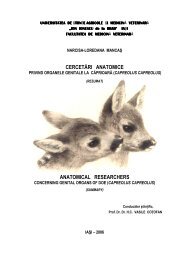
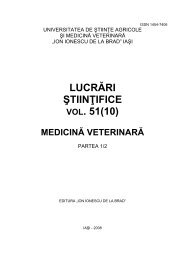
![rezumat teză [RO]](https://img.yumpu.com/19764796/1/190x245/rezumat-teza-ro.jpg?quality=85)
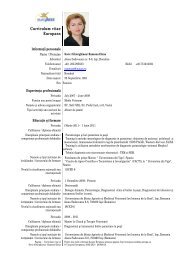



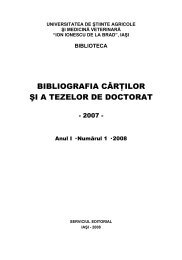
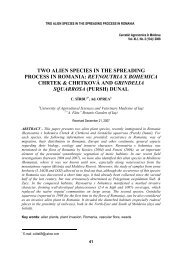
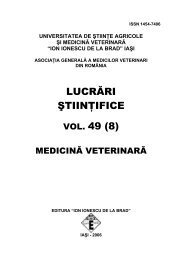
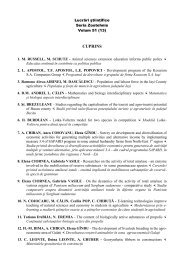
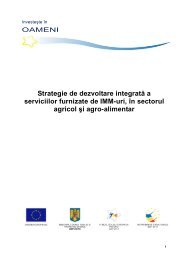
![rezumat teză [RO] - Ion Ionescu de la Brad](https://img.yumpu.com/14613555/1/184x260/rezumat-teza-ro-ion-ionescu-de-la-brad.jpg?quality=85)
